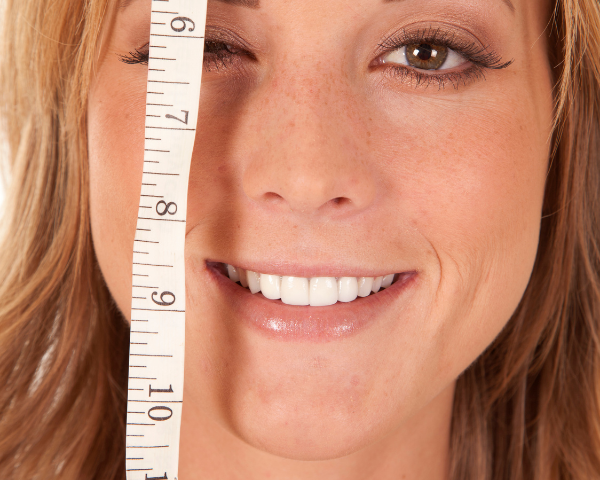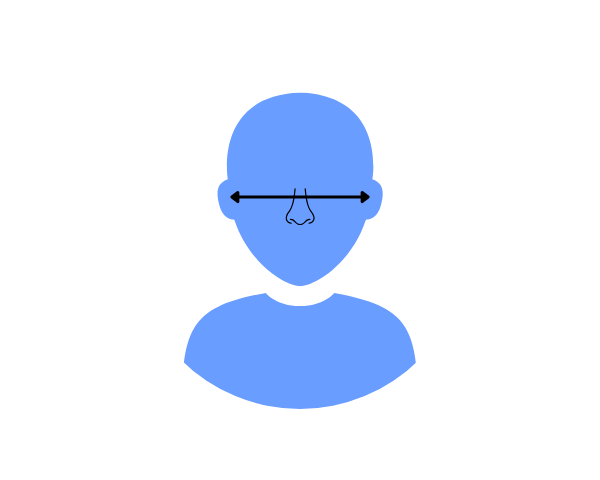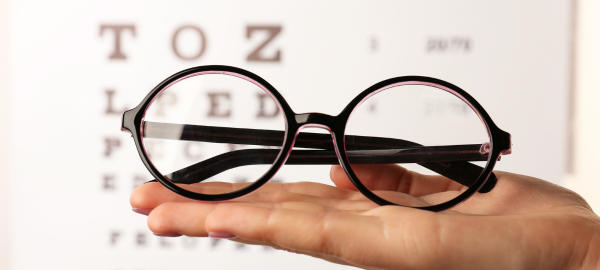How to Pick The Most Comfortable Eyeglasses for You - A 5 Step Guide

Reviewed by
Beck Jinnette
Glasses are almost like an extension of our body, so finding the perfect and most comfortable fit can be a life changer.
There are many things to consider when choosing your first pair of glasses, or even a brand-new model to freshen up your prescription or look.
This article is here to guide you in ensuring you get the most comfortable and perfect pair for your needs.
Fortunately, measuring your face for glasses frames is something you can easily do at home.
With a few simple steps, you can determine your bridge width, frame width, temple length, type of face shape, and pupillary distance. We’ll show you how in this article.
1. What type of eyeglasses do you need?
Before diving into the aesthetics, the first step is to ensure your eyeglasses serve their primary function – improving your vision. This starts with a current and accurate prescription for your prescription lenses.
Next, consider the type of lenses that your lifestyle and vision need. Options include:
- Single-vision lenses for nearsightedness or farsightedness.
- Progressives for those requiring multiple focal points.
- Reading glasses for those with presbyopia.
- Prism lenses to correct vision disorders like double vision.
- Plano lenses to change up your look without affecting your vision.
- Prescription sunglasses to provide UV protection and correct your vision.
Additionally, lens add-ons and coatings such as anti-glare and blue light filtering can be crucial for comfort, especially if you spend significant time in front of digital screens.

2. Determine your face shape
The second thing to consider is your face shape. As you can see in the image below, there are different types of face shapes.
Knowing yours is crucial to finding the frame shape that will fit your face perfectly without any discomfort.
Go to our dedicated page to find out your face shape and get frame recommendations.

In general, it’s important to match your face shape with the right frames to ensure the weight of the frame is distributed correctly on your face, without any pressure points on the temples, nose, or cheekbones.
The goal is to find eyeglasses that feel as if they’re barely there!
3. Know your measurements
If you know your face measurements, you’re one step closer to finding the perfect pair! To be prepared, follow this measuring your face for glasses guide.
Key measurements to know include frame width, lens width, temple length, and bridge width.

DID YOU KNOW?
There is no one-size-fits-all option when it comes to maximizing the comfort of your glasses; they need to match your specific requirements.
4. The importance of the nose bridge
Your perfect pair should have the right nose bridge to fit your facial features and measurements. This refers to the horizontal distance between the two lenses.
The size and type of bridge play a role in how the weight is distributed over your nose, hence impacting how comfortable your eyeglasses are. Here are a few simple rules:
- The frames should never feel too tight on the nose.
- There can be a slight gap between the bridge of the glasses and your nose.
- If the eyeglass bridge is too wide, the glasses will slide down.
- If the bridge is too narrow, it’ll lead to a lot of pressure on the sinuses.
Additionally, if you have a low nose bridge, you can opt for Asian-fit glasses.
These are designed with a shallower nose bridge and a wider front and are an excellent alternative for those who struggle with glasses slipping down their nose.
5. Consider your personality and lifestyle
Another key factor to consider is your lifestyle and personal style.
Eyeglasses that align with your lifestyle can significantly enhance wearability, prevent discomfort, and even protect your eyes in various environments.
For an active lifestyle: If you’re constantly on the move, involved in sports, or enjoy outdoor activities, look for eyeglasses that promise durability and flexibility. Materials like polycarbonate are not only impact-resistant but also lighter than traditional plastic, reducing the strain on your nose and ears throughout active use.
For the digital native: If you spend considerable time in front of computers or digital devices, consider lenses with blue light filtering capabilities.
For the fashion-forward: If expressing your personal style through eyewear is your priority, you’ll find that comfort doesn’t have to be sacrificed for fashion. Look for frames that balance style with ergonomic features. For instance, lightweight materials such as acetate can offer both a chic look and a comfortable fit.
More tips for the most comfortable glasses fit
The examples listed above are just some of the many combinations of materials, lenses, models, add-ons, and coatings available to create your personalized pair of glasses.
Some other tips for the most comfortable fit:
If the frames are too large, it will be very evident – they won’t even sit on your face and will slide down your nose. Conversely, if they’re too small, they might pinch the cheeks and even lead to headaches.
Wearing glasses with headphones can be quite uncomfortable. If earphones just don’t cut it and you’re a headphones addict, consider thin-frame glasses to optimize noise cancellation.
Familiarize yourself with DIY methods of adjusting eyeglasses that don’t fit perfectly so that you can save yourself a trip to the optician and keep feeling comfortable with your new eyeglasses.
Wearing new glasses requires a period of adjustment. During the initial days, it is normal to experience mild headaches and tiredness in the eyes.
The point is for your eyeglasses’ shape and size to be in harmony with your face and skin tone, bringing about an overall balanced look.
If you need more guidance on how to choose your glasses, you can contact one of our certified in-house opticians.










































